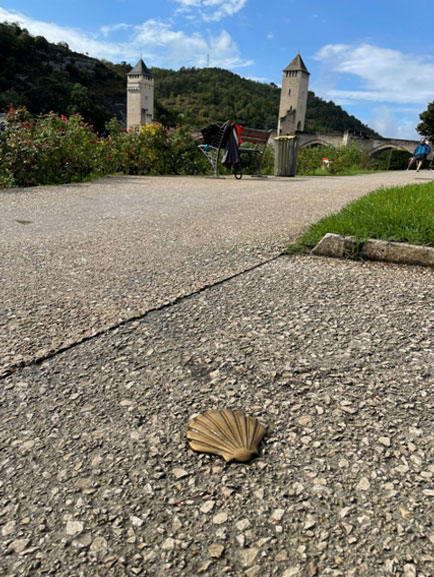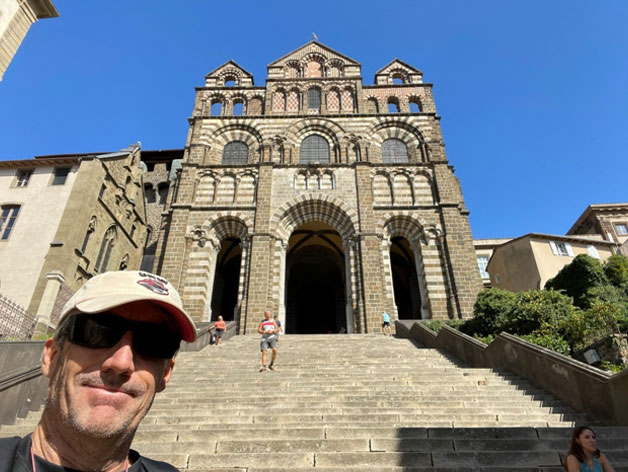Camino de Santiago (Part 1)
The Camino de Santiago, which translates to the Way of St. James in English, is a historic pilgrimage route starting from various locations across Europe and culminating in Santiago, Spain. For over a millennium, Catholic pilgrims have journeyed this path. The cathedral in Santiago houses the alleged remains of the Apostle James, and many pilgrims believe that his spirit provides them with protection throughout their journey. Historically, the government took measures to shield the Camino from the Moors in southern Spain, while the church worked tirelessly to provide shelter and medical assistance for the travelers.

Since around 1990, interest in the Camino has surged, with a steadily increasing number of individuals completing the route by about 10% each year. In 2023, records indicate that 446,035 individuals finished the pilgrimage, averaging approximately 1,222 completions each day, although this number can significantly fluctuate depending on the season.
The Camino has been accessible to individuals from all religious backgrounds. In its earlier days, it ranked among the top three significant pilgrimages in the Catholic tradition, alongside those to Jerusalem and Rome. Currently, I would estimate that a relatively small percentage of modern pilgrims identify as Catholic. From discussions I've had, it appears that many undertake the journey for various reasons: spiritual fulfillment, a physical challenge, a vacation, or a blend of these motivations.
During my time in Baltimore from 1992 to 2001, I managed to hike around 200 miles of the Appalachian Trail (AT), which I thoroughly enjoyed. It remains a goal on my bucket list to someday return and complete the trail during the fleeting period after my retirement and before age limits me. In conversations with friends who share my passion for hiking, we've often discussed the AT, the Pacific Crest Trail, and other extended hiking routes. The Camino de Santiago occasionally surfaced in our talks, but I didn't delve into its details until a few years later.
In 2015, while I was in Germany, my cousin from Marburg took me to explore Mainz. There, his wife pointed out metal shells arranged along the main thoroughfare, explaining that they marked the Camino de Santiago. These shells signified the pathway leading all the way to Santiago, located 2000 kilometers away.

Interestingly, the shell symbolizes the Camino, originating from the tradition of pilgrimage that concluded in Fisterra, Spain, known as the 'end of the earth.' It was commonly believed that this locale was the westernmost point of land, so to signify their completion of the journey, travelers would gather scallop shells found readily on the beaches. These shells also served a dual purpose as bowls during their return trips.
A few years after my travels in Germany, I became friends with an adventurous globetrotter named Susan. She shared her experience of walking a 500-mile section of the Camino and, knowing our mutual interests, highly encouraged me to undertake it as well. More recently, a friend from my hiking group shared her own Camino journey on Facebook, which prompted me to prioritize it on my list of goals.
Fast forward to August this year. I opted out of attending Burning Man, partly due to feeling a bit overwhelmed from my experiences there in 2022 and 2023. Nonetheless, I like to embark on an adventure during this time of the year. My most significant adventure for 2024 so far had been a mountain climbing expedition to Mexico in January. By August, I was eager for another substantial experience.
Initially, I had envisioned embarking on a grand road trip to Alaska with two friends, but it eventually fell through due to unforeseen circumstances. I then considered traveling to Alaska alone, exploring various destinations via the Alaska ferry. However, planning this trip became complicated because of limited ferry schedules caused by staffing shortages, particularly making it challenging to travel between Juneau and other northern areas like Homer.
While grappling with the logistics of the Alaskan journey, I realized that it would be the perfect opportunity to embark on the Camino instead. Unlike most pilgrims who walk it, I planned to traverse the route by bicycle. My departure was scheduled for August 30 from Le Puy, France, with an anticipated return within three to four weeks, which Mrs. Wizard surprisingly and pleasantly approved.
In the second part of my story, I will dive into the adventure that began in Le Puy.
Source: Wikipedia page on Camino de Santiago

September 26, 2024 Puzzle Question
Imagine you are a chef in a secluded area without clocks or other timekeeping devices, relying solely on a four-minute hourglass and a seven-minute hourglass. You have a stove with water already boiling in a pot. The king requests a perfectly timed nine-minute egg, and he is a perfectionist who can discern even the slightest over- or under-cooking. How can you achieve this task?
September 26, 2024 Puzzle Answer
- 1. Turn over both hourglasses.
- 2. Once the four-minute hourglass has run out of sand, flip it over. (time elapsed = 4 minutes)
- 3. When the seven-minute hourglass runs out of sand, turn it over as well. (time elapsed = 7 minutes)
- 4. After the four-minute hourglass runs out of sand again, turn the seven-minute hourglass back over. (time elapsed = 8 minutes)
- 5. When the seven-minute hourglass runs out of sand, serve the egg. (time elapsed = 9 minutes)
October 17, 2024 Puzzle Question
Using a balance scale paired with four distinct weights, you need to figure out the weights needed to balance any integer from 1 to 40. How much should each of the four weights be?


